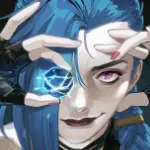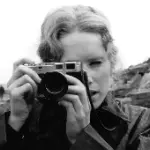I’m a film critic, fervent admirer of Christopher Nolan, Steven Spielberg, and sci-fi and psychological movie fanatic. Come strike up some conversations with me!
It's been a week since I watched "Dune 2," and the breathtaking scenes still occasionally flash through my mind — a quite commendable adaptation from the novel. Meanwhile, despite its high rating of 8.7 on Peliplat, I've noticed that many of my friends didn't quite enjoy it. Why such a difference?
To be honest, I'm not sure. But I have a feeling that when viewed as an adaptation, the film harbors many intriguing nuances that might go unnoticed if viewed merely as a standalone movie, yet these details are precisely what make the film captivating.
What are the sounds before the films begin?
Before both "Dune" movies begin, when the logos of the production companies are on screen, there's a mysterious lines in the Sardaukar language. The first movie had "Dreams are messages from the deep," while the second one had "Power over spice is power over all." These lines hint at the importance of Paul's dreams in the first part, guiding him into the desert, and the centrality of spice in sparking the ultimate conflict in the sequel.
The Importance of "Spice"
Why is "spice" so crucial? According to the novel, about ten thousand years ago, there was a massive human-machine war known as the Butlerian Jihad. The conflict arose as humans realized that artificial intelligence threatened their existence, potentially enslaving them. This led to a two-generation war between pro-AI and anti-AI factions. Eventually, the anti-AI side won, banning all forms of artificial human intelligence permanently. Without AI assistance, humans resorted to enhancing their own abilities, such as Mentats with computer-like calculations and the Bene Gesserit with future predictions and voice control — all powered by spice consumption. Hence, the planet Arrakis, the sole producer of "spice," became the eye of the storm for all conflicts.

Princess Irulan
As the film begins, there's a monologue voiced by Princess Irulan. Why her? This choice stems from the novel, where each chapter begins with a quote from her writings. Her prose not only showcases literary prowess but also keen insights into human nature.

It's worth noting a significant difference between the movie and the novel regarding Princess Irulan's portrayal. In the film, when Paul abruptly proposes marriage to her as a political tool, she remains silent, displaying a sense of resignation. However, in the novel, she consoles the Emperor, stating that her presence on the planet Arrakis is for a marital alliance, indicating a more proactive stance towards Paul.
Chani
The adaptation of Chani's character undergoes significant changes in the film.
In the novel, she remains obedient to Paul throughout, drawn to his charisma like everyone else. However, in the movie, she possesses a discerning mind, being the only one able to see through the power dynamics among humans.
This is evident, firstly, when Paul drinks the Water of Life. In the film, Chani has a heated argument with Jessica, aware that they are staging a miracle. In contrast, in the novel, Paul drinks the Water of Life to gain greater abilities, and Jessica is unaware that this action caused his unconsciousness. When Chani arrives, instead of quarreling with Jessica, they mutually pray for Paul's recovery, deepening their bond.
This difference is also apparent when Paul declares his intention to marry Princess Irulan. In the movie, she trembles with anger at Paul's announcement and rides off on a sandworm alone in the final scene. In the novel, her demeanor is much more submissive, to the extent that Paul and Jessica constantly reassure and deceive her, such as telling her that although Paul won't marry her, she is the only one in his heart.
Another interesting detail is Chani's blue ribbon. In the original novel, it's a Fremen custom for women to wear blue ribbons when they fall in love. In the movie, Chani is seen wearing a blue ribbon from the moment Paul rides the sandworm. After their argument, she takes off the ribbon and ties it around her wrist.

I find the movie version of Chani more confident and intelligent, far more charming than her portrayal in the novel.
Feyd Rautha
He is portrayed as a strikingly formidable antagonist in the film, matching Paul in combat prowess. However, in the novel, he's not as formidable in terms of combat ability but is depicted as cunning and scheming.

For instance, in the novel, Feyd is the Baron's favorite nephew and his designated heir. After defeating House Atreides and reclaiming Arrakis, the Baron sends Beast Rabban to manage the spice mining operations, allowing him to oppress the laborers deliberately to incite public hatred. When the time is ripe, Feyd-Rautha emerges as the hero, rescuing the oppressed and consolidating Harkonnen's rule over Arrakis.
Another difference occurs in the arena scene. While both the novel and the movie depict slaves being drugged beforehand (though, in reality, they aren't), Feyd-Rautha prepares a more comprehensive backup plan in the novel. He implants keywords into the slaves' subconscious, causing paralysis upon hearing them. Additionally, he applies poison to more than one blade, despite the rules stating only one should be poisoned. Despite these advantages, Feyd's overconfidence initially puts him in a dominant position, but he nearly gets killed later, ultimately resorting to cheating to win. So, in the novel, he isn't as formidable, making the outcome of his duel with Paul quite predictable.
Sandworms - Fremen's Mode of Transportation
While "Dune 2" thoroughly depicts riding sandworms, it doesn't show how they dismount. According to the original text, they slide off from the sides when the sandworm tires. After landing in the desert, they need to quickly find a concealed spot to avoid attacks from the fatigued sandworm.

Now, if sandworms tire, how do the northern Fremen travel to the south? This involves a method mentioned in the original text but not shown in the movie: transferring. When a sandworm tires, its speed decreases, prompting riders to dismount and find another sandworm.
I find the Fremen's mode of transportation environmentally friendly, but the risk of death is too high.
Baron Harkonnen's Black Liquid Bath
The black liquid that the Baron Harkonnen bathes in should have been gold, as in the novel, where the Baron uses spice for therapeutic baths. The alteration to black might be a nod to medieval medical practices of bathing in petroleum for health benefits, also echoing the Baron's sinister and dark persona.

"Dune" presents an immensely vast world, and what I've listed here is just a tiny fraction. I genuinely recommend fans of the movie to delve into the original work. However, on another note, I'm not particularly optimistic about "Dune 3." What attracts me most to "Dune" is its world, not just the story. In my opinion, the world of "Dune" has already been sufficiently showcased in the first two parts. The upcoming story might delve into more intricate power struggles, which, frankly, I find somewhat clichéd compared to "Game of Thrones."
I hope Villeneuve finds a way to keep "Dune 3" as mysterious and grandiose as its predecessors.















































View replies 0